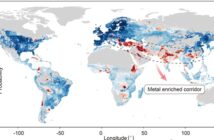Growers are advised to test soil immediately after harvest to check for nutrients and possible contaminants following record-breaking rainfall this season.
Soil health specialist Shane Brewer, from laboratory group Eurofins Agro expects it has washed away nitrogen, phosphorus and other essential nutrients and some soils might contain worrying levels of contaminants like aluminium, which could jeopardise future crop quality.
He suggests testing soil immediately after harvesting crops offers the best opportunity to calculate optimum fertiliser requirements.
“Testing immediately after harvest will help understand how the outgoing crop has taken up nutrients and what is left available to the following crop. This will help to reduce input costs whilst improving plant available nutrients in soil stock,” he says.
Traditional tests that measure nitrogen levels go one step in helping make decisions, but for those looking for greater insight and the potential to manage land with fewer chemicals, a more detailed analysis is crucial.
“Our Fertilisation Manager test provides detailed analysis of common plant available nutrients, macro and micronutrients, the physical, biological and chemical attributes of the soil as well as its carbon properties,” he says.
He suggests that whilst a test of this type will offer significant data to help calibrate inputs, it is also a way to understand how bacteria and other soil life stand to benefit and thrive if the right nutrients are added.
“Soil Life Monitor is a test that we are seeing greater demand for as farmers are looking to become more sustainable by using regenerative farming methods. It determines the total microbial biomass, fungi, bacteria and protozoa in soil samples. It also identifies physical characteristics such as pH and the quality of organic matter,” he adds.
He explains that Soil Life Monitor uses the phospholipid fatty acids (PLFA) method to measure the biological parameters of soil life.
“Fatty acids present in the cell membranes of living organisms are measured to obtain a fingerprint of soil life. This makes it possible to distinguish between fungi and bacteria by measuring the way PLFAs are degraded in soil, which provides a more accurate picture of what soil needs to thrive,” he adds.
Flooding and waterlogging experienced throughout the UK this year have caused aerobic bacteria to be replaced by anaerobic bacteria which produce gases like methane and nitrous oxide. The reduction in oxygen has also reduced earthworm numbers in some areas.
“Regardless of what conditions are apparent after harvest, it is the best time to ascertain what impact the outgoing crop, and the conditions it has been grown in, have had on soil health. It is vital to understand this to ensure soils can provide plant available nutrients to maximise the subsequent crop’s yield,” concludes Mr Brewer.




